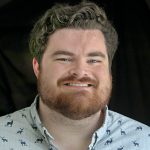
- The NewYork-Presbyterian hospital system's CEO predicted on Friday that Omicron will peak next week.
- Outlining the statewide peak, Steve Corwin noted that ICU cases are lower than last winter's.
- "Very rare to see somebody admitted who's had a booster," he added.
The CEO of NewYork-Presbyterian predicted on Friday that COVID-19's Omicron variant will reach its peak in the Empire State next week.
Speaking at a briefing held by New York Gov. Kathy Hochul, Steve Corwin explained that while cases are still rising, the key indicators he's seeing throughout the hospital system point to Omicron running out of steam in the near future.
"We think with our modeling that the peak will happen next week," Corwin said. "We've also seen some leveling in the past couple of days, fingers crossed that that represents a plateau."
Another recent model from a Columbia University epidemiologist showed Omicron peaking nationwide by January 21.
Both Hochul and Corwin urged caution as cases continue to rise in New York as hospital capacity and staffing remain major problems, particularly in parts of Upstate New York.
"We're about 20% higher than we were last year at this time, but much less in the way of cases in our ICUs and cases requiring ventilators, so we're very thankful for that," Corwin said.
"Very, very rare to see somebody admitted who's had a booster," he added later. "Thankfully very little in the way of children being admitted, which we hope will continue."
New York has one of the highest vaccination rates in the country at 72% as Hochul has continued to push for more shots in arms through employer and state worker vaccine mandates.
"The patients requiring the ICUs are older, sicker and mainly unvaccinated," Corwin said.
Hochul also revealed new state data showing an average of 42% of those listed under the category of COVID hospitalizations as patients who were admitted to the hospital for non-coronavirus reasons, often testing positive in the hospital as a matter of standard procedure.
The dataset was the first of its kind for a New York briefing, and Hohcul added that a more complete data analysis will emerge over time as the state keeps measuring the distinction.

